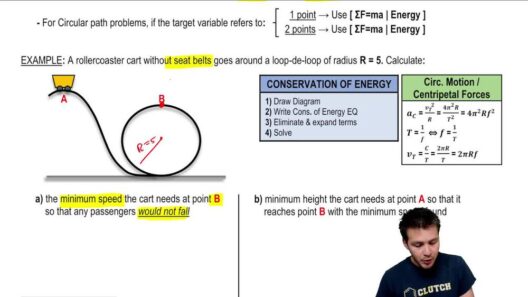Systems thinking is imperative for understanding the intricate relationships within physical phenomena, particularly in the realm of energy conservation. This multi-faceted approach not only shifts perspectives but enhances curiosity about the natural world. By focusing on energy conservation, one can derive solutions to complex physical systems that may otherwise seem insurmountable.
At the core of energy conservation lies the Law of Conservation of Energy, which posits that energy within a closed system remains constant, although it may change forms. When addressing systems, such as mechanical or thermodynamic constructs, identifying energy exchanges can elucidate the underlying principles governing their behavior.
The first step in solving systems using energy conservation is understanding the types of energy involved. Kinetic energy (the energy of motion) and potential energy (stored energy based on position) are the primary forms. In mechanical systems, the conversion between these forms is observed in various contexts, such as a swinging pendulum or a roller coaster. Both scenarios provide clear illustrations of energy transformation.
Take the example of a pendulum. As it swings, energy oscillates between kinetic and potential forms. At the apex of its swing, potential energy is maximal, while kinetic energy is minimal. Conversely, at the lowest point of the swing, kinetic energy peaks, and potential energy is at a nadir. By implementing energy conservation principles, one can derive relationships that allow for the calculation of heights, velocities, and even the effects of frictional forces, which render the system non-ideal.
Incorporating mathematical modeling into energy systems can yield effective solutions. For instance, applying the equations for kinetic and potential energy can help predict the outcomes of motion under various conditions. The equation for kinetic energy is given by ( KE = frac{1}{2}mv^2 ), where ( m ) represents mass and ( v ) denotes velocity. The potential energy, denoted as ( PE = mgh ) (with ( g ) being the gravitational constant and ( h ) the height from a reference point), allows one to determine maximum and minimum energy states. When these principles are juxtaposed with energy loss factors, such as air resistance or friction, a more sophisticated analysis emerges.
Thermodynamic systems provide another rich ground for applying energy conservation principles. Heat transfer, work done by or on the system, and changes in internal energy frame the foundation of this analysis. The First Law of Thermodynamics—energy can neither be created nor destroyed—underscores the crucial role of energy transformation in these contexts. By considering a closed thermodynamic cycle, one can apply the conservation laws to navigate complex interactions. For example, in an ideal gas undergoing an isothermal expansion, understanding how热量 (heat) interacts with the system’s internal energy facilitates comprehensive predictions about pressure and volume changes.
Within real-world applications, these physics principles have significant ramifications. Engineers continuously apply energy conservation laws to design efficient systems—from automobiles to power plants. By examining energy inputs and outputs, designers can optimize workflows, ensuring that the systems operate close to ideal efficiency. Moreover, energy efficiency has far-reaching implications for sustainability and climate action, as reducing waste translates directly to lesser environmental footprints.
As curiosity piques regarding the potential for solving ecological challenges, one can recognize how energy conservation extends beyond mere calculations. Take, for instance, renewable energy systems. The conversion of solar energy into electrical energy through photovoltaic cells exemplifies a system steeped in energy transformation. By employing energy conservation principles, one can analyze the efficiency of such systems, ultimately contributing to advancements in sustainable technology.
Moreover, understanding energy systems encourages innovative thinking. The challenge of harnessing tidal energy or geothermal energy lies not merely in technical implementation but in deducing how various forms of energy interact within those systems. By contemplating these interactions through the lens of conservation, a shift occurs—moving from merely utilizing energy to understanding how to manipulate it for maximum efficacy.
Education plays a pivotal role in embedding these principles in future generations. By incorporating energy conservation strategies into curricula, students are equipped to grapple with pressing issues like climate change and energy sustainability. They develop critical thinking skills essential for addressing the challenges of tomorrow. As they learn to navigate complex systems, they gain insight into how physical laws govern not only our technological endeavors but also our broader environmental impacts.
In conclusion, solving systems through the prism of energy conservation reveals a profound interconnectedness within physics. Engaging with both mechanical and thermodynamic systems uncovers the underlying simplicity amidst apparent complexity. By fostering a holistic understanding of energy transformations and their implications, we prepare to tackle the formidable challenges that lie ahead, warranting a sense of awe and responsibility towards our planet. Shifting our perspectives to embrace these fundamental principles can invigorate our quest for sustainable solutions. The dialogue between energy conservation and environmental stewardship holds immeasurable potential for innovation and a sustainable future.







